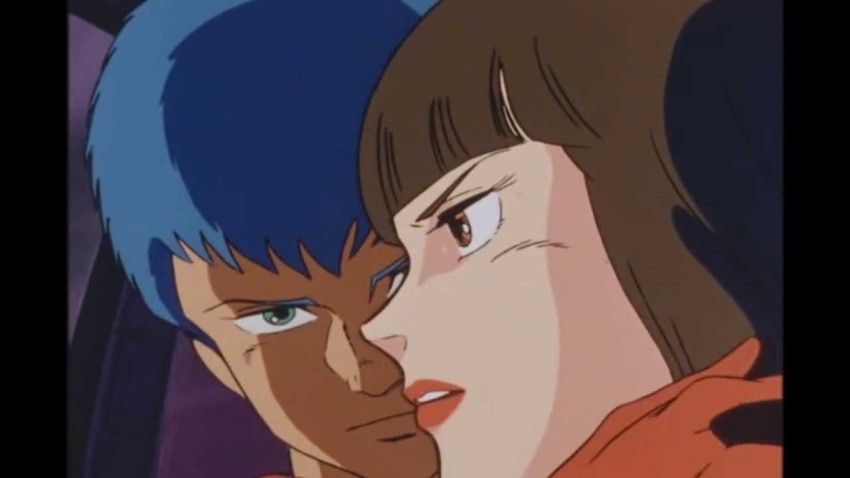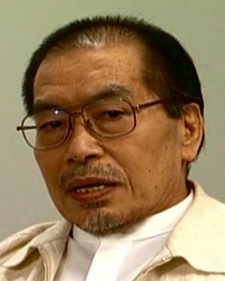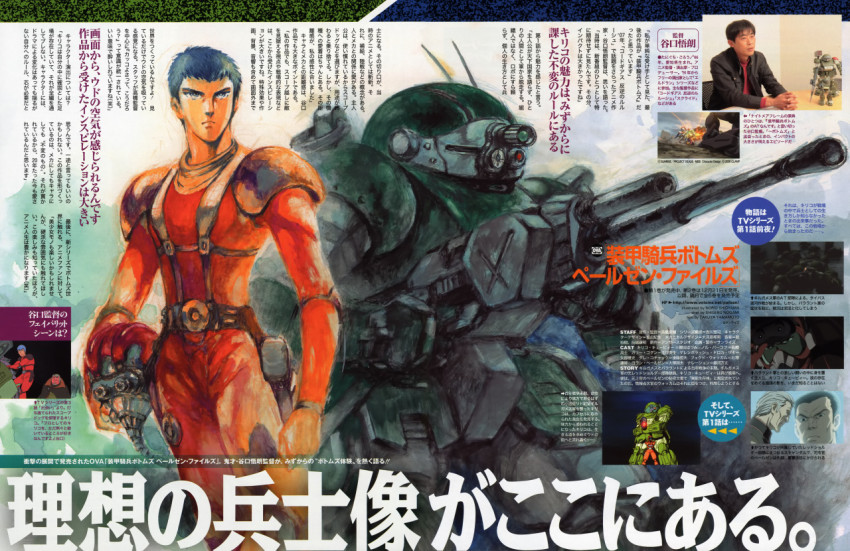Norio Shioyama 1940-2017
April 14, 2017 · 0 comments
 Norio Shioyama, who died with his wife Tokiko in a house fire yesterday, was first and foremost an illustrator, dragged unceremoniously into the anime world by the staffing demands of the industry’s boom-time. He was born in Kumamoto, the third of seven children of a sugar wholesaler, and passed his early years in the firm belief that he was going to become a writer. It was only in his teens that he discovered a love of art, but even then it was merely a hobby for him, with weekend trips to paint local landscapes, snatched during his years as an everyday salaryman. He also developed a love of the “Sunday funnies”, cartoon strips published in a local newspaper, to which he began sending samples of his own cartoon work.
Norio Shioyama, who died with his wife Tokiko in a house fire yesterday, was first and foremost an illustrator, dragged unceremoniously into the anime world by the staffing demands of the industry’s boom-time. He was born in Kumamoto, the third of seven children of a sugar wholesaler, and passed his early years in the firm belief that he was going to become a writer. It was only in his teens that he discovered a love of art, but even then it was merely a hobby for him, with weekend trips to paint local landscapes, snatched during his years as an everyday salaryman. He also developed a love of the “Sunday funnies”, cartoon strips published in a local newspaper, to which he began sending samples of his own cartoon work.
Aged 21, he moved to Tokyo to work in newspaper sales, but continued with his under-the-counter cartooning. By 1966, as Japan’s animation industry expanded to four times its pre-Astro Boy size, he found work at the studio Hatena Pro, subcontracting work on Harris’s Wind and the iconic baseball story Star of the Giants. He began as a lowly tracer, working on a glass plate above a naked light bulb. “I’d get 30 yen a frame,” he said in an interview, “and I could manage maybe 50 frames a day, so that was 1500 yen. That was good money in those days, when the average daily wage was about 700 yen, so I started to tell myself I was doing pretty well!”
 Japanese animation had recently adopted xerography – the use of a Xerox camera to cut out the tracing stage. This proved to be a boon for Shiroyama, who was often accused of drawing artwork that was difficult to dilute or dumb down for the production-line working style of modern animation. Thanks to the new technology, he was allowed to throw his key art onto the cels exactly as he had drawn it, forcing the in-betweeners to keep up as best they could. Before long, however, he was noticed by the boss of Hatena Pro, who made him his assistant.
Japanese animation had recently adopted xerography – the use of a Xerox camera to cut out the tracing stage. This proved to be a boon for Shiroyama, who was often accused of drawing artwork that was difficult to dilute or dumb down for the production-line working style of modern animation. Thanks to the new technology, he was allowed to throw his key art onto the cels exactly as he had drawn it, forcing the in-betweeners to keep up as best they could. Before long, however, he was noticed by the boss of Hatena Pro, who made him his assistant.
“That’s when I started to hate my job,” he confessed. “Because I was taken away from drawing.” Fortunately, his deprivation was brief. Not that life was all bad at Hatena Pro, which Shioyama described in Mad Men terms as an epic of all-night drinking and hungover sleep-ins. In later life, he would become a notorious workhorse who refused to go out drinking with the younger staff.
Sports and comedy occupied much of his career in the 1960s, moving from Star of the Giants to the women’s volleyball saga Attack No.1, and then the visceral wrestling epic Tiger Mask. As the anime business suffered its great slump at the beginning of the 1970s, Shioyama proved to be too valuable to lose, and he found himself at the start-up studio OH! Pro. Although the studio did initiate several of its own projects, it largely earned its keep freelancing for other productions. The returns were lower, but so was the risk, as Shioyama worked on several of the 1970s sci-fi greats, including Battle of the Planets and Casshan.
Shioyama’s descriptions of the 1970s anime business are a world away from today’s digitally-integrated industry, with ateliers scattered across Tokyo having to collate their artwork by hand and not trusting in the new takkyubin services. As his colleague Hideyuki Tomioka remembered, the greatest workplace hazard for the thirty-something animator was piles: “I’d be sitting in my car most of the day, running between all the home-office freelances and small studios. I’d cover 250 or 300 kilometres a day.”
Now firmly established as a key animator, Shioyama moved into character design with 1978’s Daitarn 3, although the largest and most enduring splash of his career came in 1983 when he created the characters for Armoured Trooper VOTOMS. While Kunio Okawara’s machinery designs get most of the attention today, Shioyama’s human characters were acclaimed at the time, with Chirico Cuvie, the blue-haired, perfectly-muscled veteran lead, winning the 1984 Anime Grand Prix award for Best Male Character. His association with VOTOMS would continue as late as 2007, when he was credited with design work on the later Pailsen Files. But when it all began, it was hard labour, described by its own artists as “a tougher job than debt collecting”. Shioyama would stay at his desk until five in the morning, working without central heating, even in winter, before crawling home to snatch a few hours’ sleep. The average episode of VOTOMS would take eight or nine weeks from the first storyboard. “I think they had longer to write the script!” joked Shioyama.
 “I wonder if that wasn’t the spirit of the times,” he said. “Everyone was ready to work their hardest, to do their best. The result made Japan the second-largest economy in the world, but I think we lost something. We got colder. Back then, you could feel good that you were working towards Japan’s goals… you felt happy about it.”
“I wonder if that wasn’t the spirit of the times,” he said. “Everyone was ready to work their hardest, to do their best. The result made Japan the second-largest economy in the world, but I think we lost something. We got colder. Back then, you could feel good that you were working towards Japan’s goals… you felt happy about it.”
Shioyama was refreshingly objective about his fame, openly suggesting that the attention received by his work on VOTOMS owed more to the sudden rise of the anime press in the 1980s, as rival magazines tried to outdo each other with their enthusiasm for the shows of the moment. Even though he continued to work in animation proper, winning further awards for his work in Samurai Troopers, he also returned to his first love of painting and illustration, creating the covers and internal artwork for novel spin-offs from the anime shows, and a number of standalone silk-screen prints of iconic VOTOMS characters. Late in life, he would exhibit some of his VOTOMS work as art in its own right, at galleries in Fukuoka and Nagoya.
Shioyama worked long enough in the anime business to see the changes wrought by digitisation, not the least the ease of access to cheaper and more numerous in-betweeners at the end of an ISDN line. “These days, it’s a matter of course that frames can be beautifully unified,” he said. “On Infinite Ryvius, I could afford to expend a bunch of cels just showing someone sitting on the edge of a bed, and the mattress bouncing a little. I thought to myself: ‘That’s awesome! I just have to do it!’ But even so, I don’t think the characters look as good today, do they…?”
Infinite Ryvius, Jonathan Clements, Norio Shioyama, obits, Pailsen Files, Samurai Troopers, Votoms
Leave a Reply